-
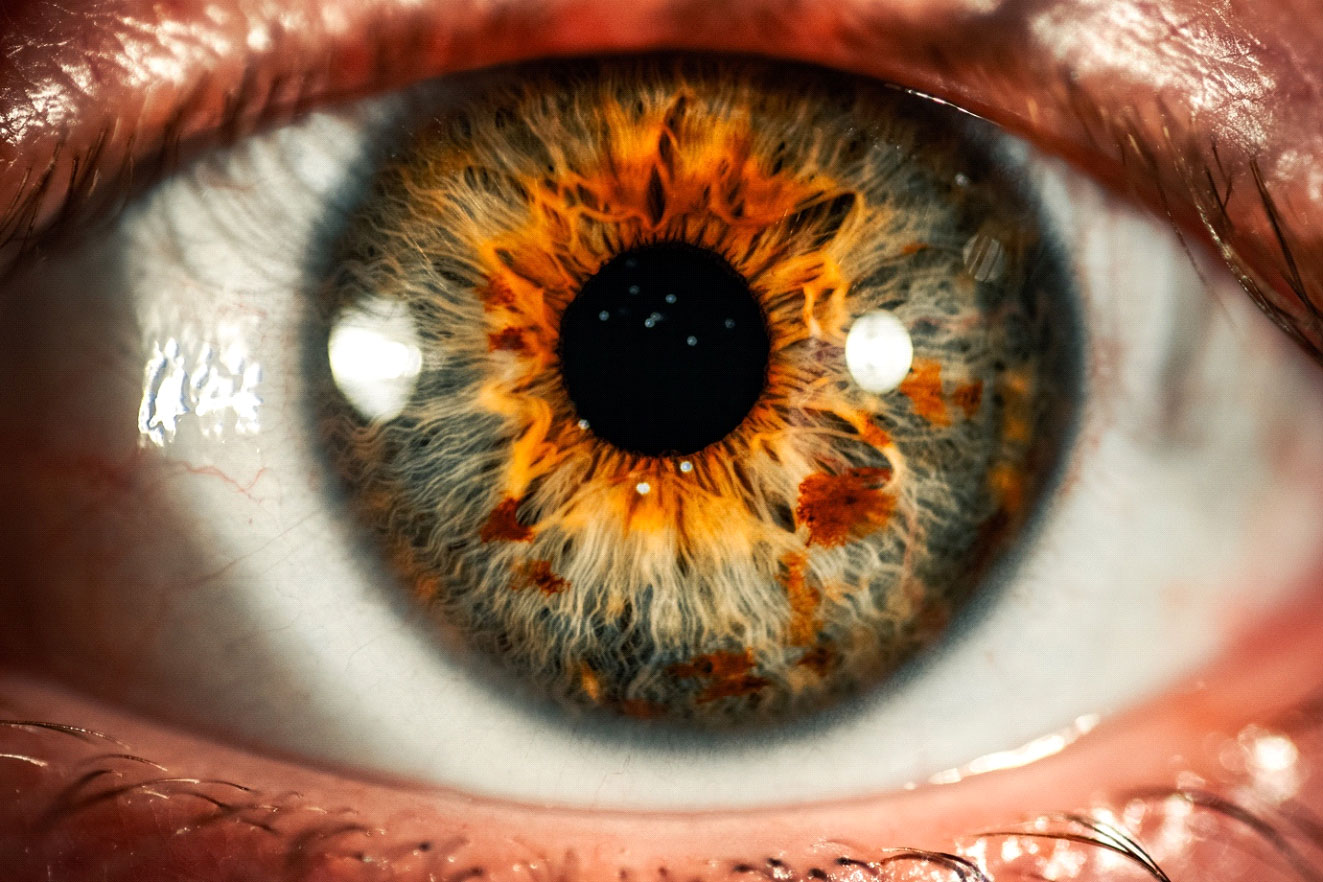
You Know, My Grandma Said We’d Cook Our Eyeballs With Too Much TV.”
Mon Apr 19 2021. 3 min readBY - Tim Vancamp, BSc, MBA; Dirk De Ridder, MD, PhD; Alan Guinn, LLB, MBA
Everyone wants to look back and believe everything that grandma had to tell us about life and especially about how to protect yourself; and it turns out to maybe, just maybe, those “old wives’ tales,” told by “old wives,” had some actual and factual truth in them.
When I think about my Grandma, I immediately think of three things she told me; two out of three have a basis fact.
⦁The first and earliest I can remember that she shared was “Don’t drink so much Coca Cola because it is too sugary and may even burn a hole in your stomach.” Certainly, dubious and unknown in origin, but God bless her for her concern, and it was probably based on trying to limit the number of carbonated beverages I’d consume. Point taken.⦁The next was to “Always finish your plate, what you put on your plate needs to be eaten, before you leave the table.” I think this was simply good nutritional practice when I grew up and was probably to focus my attention on not wasting a valuable resource, more than anything else. After all, my grandparents lived through the second world war, and food offerings were sometimes scarce and slim in nutritional content. So, the food that was on your plate was more precious than gold for them and seemed to help what you needed for strong bones and brains.
⦁The third was “Don’t watch so much TV. It’ll burn your eyes out. And definitely don’t sit too close or you’ll get crossed eyes (strabismus).” Now, of course, the only screen time we had when I was a child was via TV, and in the very earliest years even black and white at that. The very few channels received were snowy and often tended to the horizontal rolling bars or the pictures turned sideways. I don’t, for a moment, think it would literally “burn my eyes out”. Grandma limited our TV to a few hours a day, maximum.
In today’s society, we do have a series of issues because of the plethora of electronic devices, the time we spend with them, the challenges that time window represents, and how to alleviate part of that challenge. More and more video opportunities abound, and we should look at what they do to us, throughout entertainment, business, communication, education, or organization.

Figure 2: Photo by Daniel Korpai on Unsplash
Screens are pretty much an essential part of our lives, but the on-screen time surely has increased during COVID-19, as people pass more time indoors. In the past 5 years, about 1.4 billion smartphones were sold annually, bringing the number of smartphone users passed 3 billion (3.8 Bn in 2020, expected to rise to 3.8 Bn in 2021). The skewed distribution of smartphone users shows an inclination towards advanced economies including most European countries, USA, Australia, South Korea and Japan. In 2019, 81% of American adults reported owning a smartphone (2015: 64%). On average, in the above-mentioned countries 76% of the adults own a smartphone, with South Korea leading the list with a whopping 95%. Internet access in EU-27 households had risen to 90% in 2019, from 64% only in 2009. In 2019, 94% of young people (16-29 years) in the EU-27 made daily use of the internet (77% for the whole population), and 92% of this group used mobile phones to access the internet away from home or work, compared with 52% who used a portable computer in this way. In January 2021, the penetration of internet per region of the world is led by North Europe with 96% followed by: western Europe (93%), north America (90%) and south Europe (86%). The average in the world is estimated at 60%, while 6 regions in the world have less penetration of internet use (see also figure 3).
Figure 3: This infographic shows the Internet pentration rate in January of 2021, by region of the world. Source: https://es.statista.com/grafico/24230/tasa-de-penetracion-de-internet-por-region-del-mundo/Six hours and 54 minutes per day is the average global time spend navigating internet in 2020 (figure 4). This represents an 11-minute increase compared to the year before and signifies that over a quarter of our day we are “virtually connected”. This is indicated in a study that Hootsuite and We Are Social have carried out for Digital 2021. With the Filipins and Colombia leading the list with an average daily time of over 10 hours. Data from this study, shows that in the United States they use the internet slightly over 7 hours closing the list in this study of countries using internet over the world average. India, the United Kingdom and Spain are within an hour below that number.
An increasing number of reports inform the rising trends of screen time during the COVID-19 pandemic. A Canadian study reported following increases of screen time: 74% in mothers, 61% in fathers and 87% in children. In China they found an increase of about 70% in the studied population. In Poland 49% of the participants experienced an elevated screen time. And in yet another study which collected data from 9 European countries, they found a 65% increased screen time. In Spain for example the most downloaded digital applications in 2020 were instant messaging applications like WhatsApp Messenger and videocall and virtual meeting ones like Zoom and Google Meet. According to a survey carried out by Eurostat, 78% of Spanish people called or video called over the Internet last year (2019: 55%, 2018:33%). This trend can be seen in all the European countries that participated in this study. On average 60% of the population between 16 and 74 years old used internet to call or videocall in the last three months of the year (figure 5).
Figure 4: This infographic shows the average daily Internet use time in selected countries (in hours and minutes). Source: https://es.statista.com/grafico/22701/tiempo-medio-de-uso-diario-de-internet/
Whether used to communicate, for entertainment purposes, education or organization of our lives, they are an integral part of how we move about in the world nowadays. Information and communication technologies (ICTs) affect people’s everyday lives in many ways, but long periods looking at a phone, tablet, video game console, television or computer screen, can lead to problems. There is an ever-increasing body of evidence that excessive and addictive use of digital media is associated with physical, psychological, social and neurological consequences.
Let’s have a look at some consequences of extended screen time and benefits of taking some down-time away from your screen.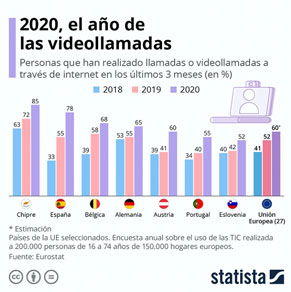
Figure 5: This infographic shows the percentage of people who have made calls or video calls via the Internet over the last three months in selected EU countries. Source: : https://es.statista.com/grafico/24208/personas-que-han-realizado-llamadas-o-videollamadas-a-traves-de-internet/
Create time away from your screen or find ways to combine work and exercise to increase the positive effects on your health. For example, you could hold walking meetings, rehearse that important presentation you have the next day while working out in the gym or at home. You could listen to that recorded webinar while taking a walk. Have to take that call? Grab your mobile, stand up and move about. Get that blood flowing.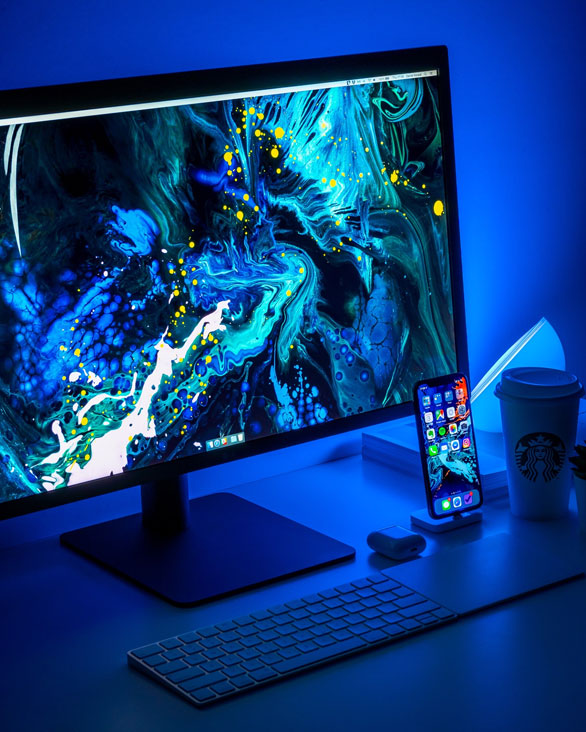
Figure 6: Photo by Daniel Korpai on Unsplash.
Excessive screen time will not only put strain on your eyes and eye dryness but can lead to worsening of your vision. Existing eye conditions can be aggravated by too much staring at a screen. Looking to long at a screen, can eventually lead to headaches, dizziness and discomfort. This is part of what is called the “computer vision syndrome”, which consists of internal ocular symptoms (strain and ache), external ocular symptoms (dryness, irritation, burning), visual symptoms (blur, double vision) and musculoskeletal symptoms (neck and shoulder pain), due to incorrect position of your posture while glaring at your screen. Also increased stress on the lower back from sitting prolonged times can increase the odds to end up with inconveniences in that region as well.
Did you know that the blue emitted light from your screens can interfere with your sleep? While the exposure to blue is important for keeping organism's wellbeing, alertness, and cognitive performance during the day, chronic exposure to low-intensity blue light directly before bedtime, may have serious implications on sleep quality, circadian phase and cycle durations. Blue emitted light interferes with the production of the sleep hormone melatonin and makes it harder for you to fall asleep. Long screen times result in shorter sleep. Furthermore, the pineal hormone melatonin is involved in enhancement of immune function and inhibition of development of cancer. Daily recreational screen time, particularly TV viewing, is associated with small increased risks of esophago-gastric and colon cancer. Replacing 1-h/day of TV viewing with 1-h of moderate-intensity physical activity or walking is associated with lower risk of oropharyngeal, lung, breast and colorectal cancers. Sleep may critically affect the regulation of circadian rhythms. And replacing physical activity with screen time, thus reduces beneficiary effect of physical activity on sleep. So, even more for children it is important for neurodevelopmental processes to get a good night rest. Both in duration and quality. Did you also know that electromagnetic radiation is sensed as light by your pineal gland? Therefore, the electromagnetic radiation emitted by your wireless devices may delay melatonin production, thus affecting your sleep. So, using mobile screen ≥8 hours per day, using the mobile for at least 30 minutes before sleeping after the lights have been turned off and keeping the mobile near the pillow are positively associated with poor sleep quality.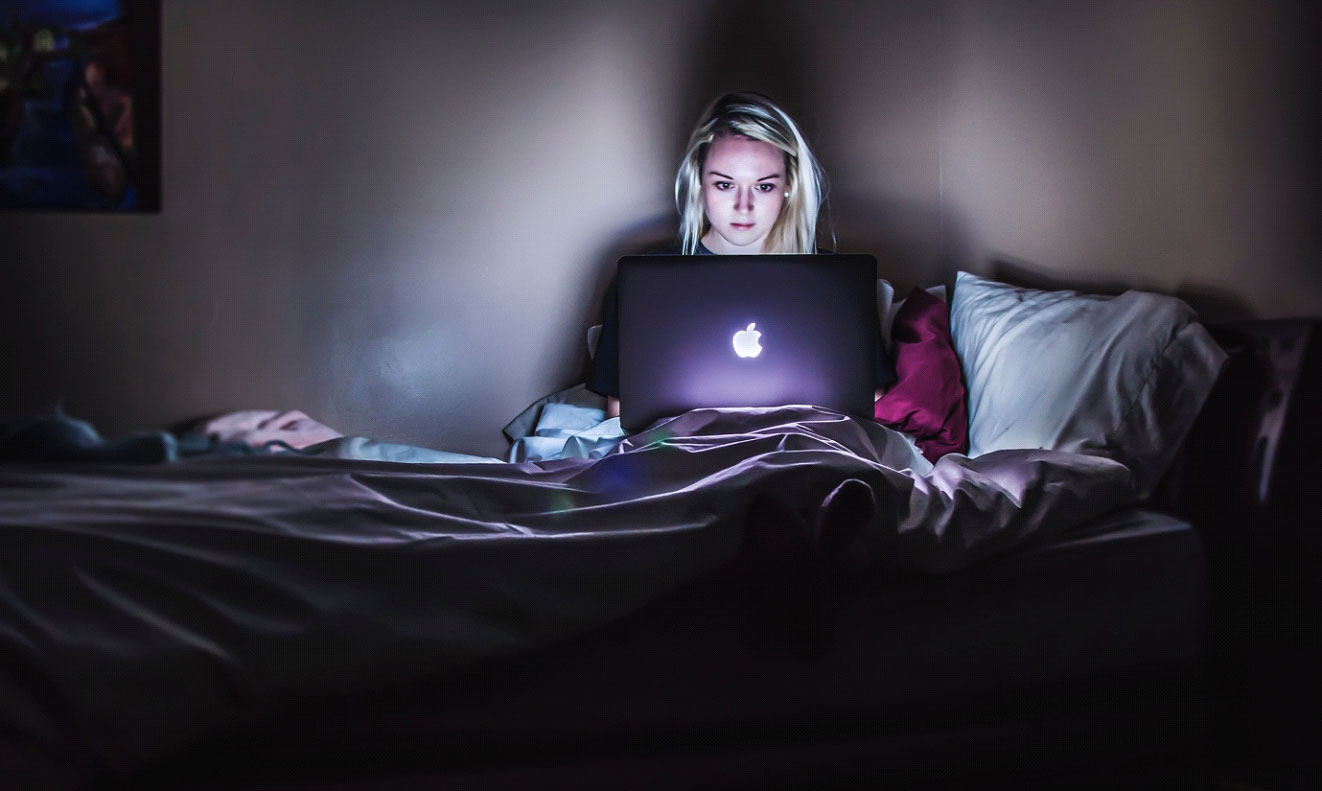
Figure 7: Photo by Victoria Heath on Unsplash.
The fact that screen staring bears the signature of a sedentary and passive lifestyle, means that physical activities are deprived. This contributes to weight-gain, which in turn leads to an increased risk of obesity with its own secondary risk factors. And of course, snacks and fast-food commercials tempt us into unhealthy habits. Increased risk of obesity and decreased exercise also makes us more vulnerable for chronic conditions, like diabetes type 2, cardiovascular diseases, cancer and dementia. Taking time away from our screens and being physically active, will definitely help us to guard against these problems. Interventions targeting screen time reduction have a significant effect on obesity reduction.Even though total screen time has small to very small effects on subsequent depressive symptoms, the association between screen time and depression depends on the device type and use. For example, there is limited evidence that television and videogames may cause depression, but the association between mobile phone and computer/internet use and depression is stronger. The link between social media use and depression is less clear.
Gaming related rewards were found to increase striatal dopamine release, which results in an induced feeling of pleasure. Videogame playing is associated with dopamine release similar in magnitude to those of drugs of abuse. Thus, the user is inclined to adopt craving behavior in order to experience repeated short-term pleasures, which in the end will result in disinhibition, quick responsiveness and inattention consolidation. Now, you can say: “good on me, I don’t game”! Not exactly, though it may in this context be positive that you’re not a gamer, but we live in a culture of constant gratification and the digitalization of our environment has demanded more results, faster. The new devices that have been developed in combination with high-speed networks have led to astounding connectivity and accessibility at astounding rates of speed.
Time spent in various screen types (video, TV, social media) is positively associated with problem behavior. For example, watching television/movies is associated with a 5.9% increase in rule-breaking behavior, 5% increase in social problems, 4% increase in aggressive behavior, and 3.7% increase in thought problems. Greater time spent playing mature-rated video games was associated with greater somatic complaints, aggressive behavior (IRR = 1.039), and reduced sleep duration. Part of the effect is due to sleep reduction.The instant gratification issue is culturally bound, that has risen over the years. And as digital devices have perfectly tailored the demand for more at a faster pace, so has changed behavior along with it. Our brain sees information as its food, but as it doesn’t take up any physical space, it continues to consume unabated. Even useless information when done in a relaxed state can trigger dopamine release, and thus craving for satisfying itself starts again. Even if we don’t like to feel we haven’t rested enough the day after, because we had a “brainy party” yesterday, the brain will want to relive that “good feeling” experience. And back to off.
Guarding yourself from the sensory overload you may or better said you will experience, a boost of your mental health and prevent irritability, anxiety, stress, loss of focus. From the perspective of social advancement, it is incredible when you think about the amount of information that is created every day. But as we can see, it can also be a curse.
The Future of Data Storage is in our DNA
Google CEO, Eric Schmidt, once said that every 2 days, we collectively create as much information (5 Exabytes) as has been created from the dawn of civilization until 2003. Hallucinating isn’t it? Well, it not exactly like this when you dig into the numbers, but it definitely does a good job of illustrating the point. Robert J. Moore investigated the validity of this quote and pieced together a more accurate one himself: “23 Exabytes (EB) of information was recorded and replicated in 2002. We now record and transfer that much information every 7 days.” Big data is growing exponentially and while in 2006 the world was generating about 160 EB of data, in 2020 we churned out an extra 2.5 EB of data per person per day. The media and entertainment industry are growing at never-before-seen speeds. Data storage includes big medical, legal and research data sets, virtual reality media assets, geophysical maps, audio recording and mastering and so on. And to put it into perspective we can compare it to our smartphones for example. Let’s assume most of these devices come with a 64GB built-in storage, that would translate into 0.0000000064 of an exabyte. Some have speculated that 5 EB likely equals all of the words ever spoken by humans. By 2025 the number of storage data is expected to climb to 463 EB … daily.It is estimated that the storage capacity for human genome data will reach 40 EB by 2025. But as the demand increase for data storage so does the need for dependable and plentiful data storage devices. An alternative to the magnetic and optical data storage systems is DNA based data storage. To make DNA data storage commonplace, cost and speed of reading and writing DNA will need to considerably drop, but progresses are being made on a daily basis. Recently researchers started using living animals for their research as the information encoded in the DNA strands as the information could potentially be passed on to offspring and allow for it to be stored for very long periods of time. The amount of global data generated by 2025 could be contained in less than 180 pounds (=81.64 kg) of DNA. The information density of DNA is capable to store 215 million gigabytes of data in just one gram. Compare that to the average hard drive a laptop houses, which is about a millionth of that and you can see the picture. There is a huge potential which go even beyond IoT (Internet of Things) into DoT (DNA of Things) where objects are created that are stand-alone information devices, completely off-grid.
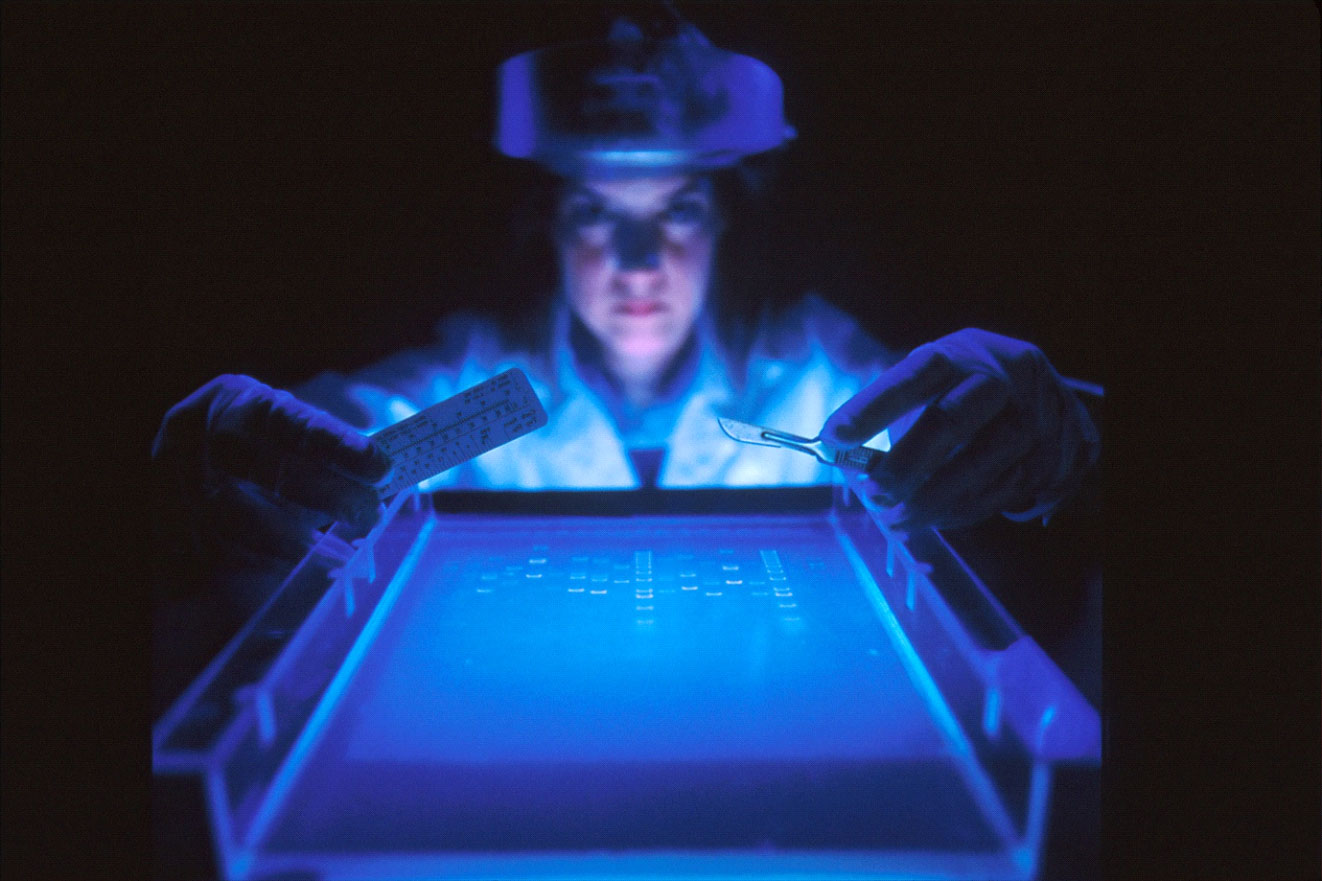
Figure 8: Photo by National Cancer Institute on Unsplash.
Nonetheless, the implications of these go way beyond this topic, but it’s staggering that we know so much and use so little of what we know, isn’t it? We leave digital traces all the time, online and even offline. And while our datasphere is rapidly expanding, there is also the growing need for governance of all this data (e.g., GDPR, CCPA, S0X, HIPAA, …). The future greater interest may develop in keeping sensitive information away from the cloud, associated with security and privacy, and storing incredible amounts of data in smaller and smaller devices. And who knows it may lead to less screen time as well, or if it even may hold potential to eliminate screen usage…Preventing your screen to rule you, can lead to improved efficiency and better learning as well. Be flexible about how and where you work and study. Not only is this a recommendable strategy for your overall physical fitness, but it will also keep your brain challenged to adapt and explore new ways, boosting your thinking and learning. Further insights into quantity and quality of different types of screen usage may lead to unique variances not only for guidelines, but also for personalized interventions (think for example of different age groups) to prevent unhealthy practices.
Screen-Free Options to Improve Your Work and Learning
It is normal to feel some fears or at least you may have to face up to them. You may fear to miss out by not being “connected” permanently, or people might perceive that you’re not working, or managers may feel that they won’t be able to communicate with their people or see what they’re doing. It is up to the stakeholders to find a blended approach of ongoing communication and mutual trust. Think of it from a different angle, when spending more time away from your screen, one can have more face-to-face conversations, engage with people and events beyond your little circle, and in the end have a bigger presence in or/and outside your organization.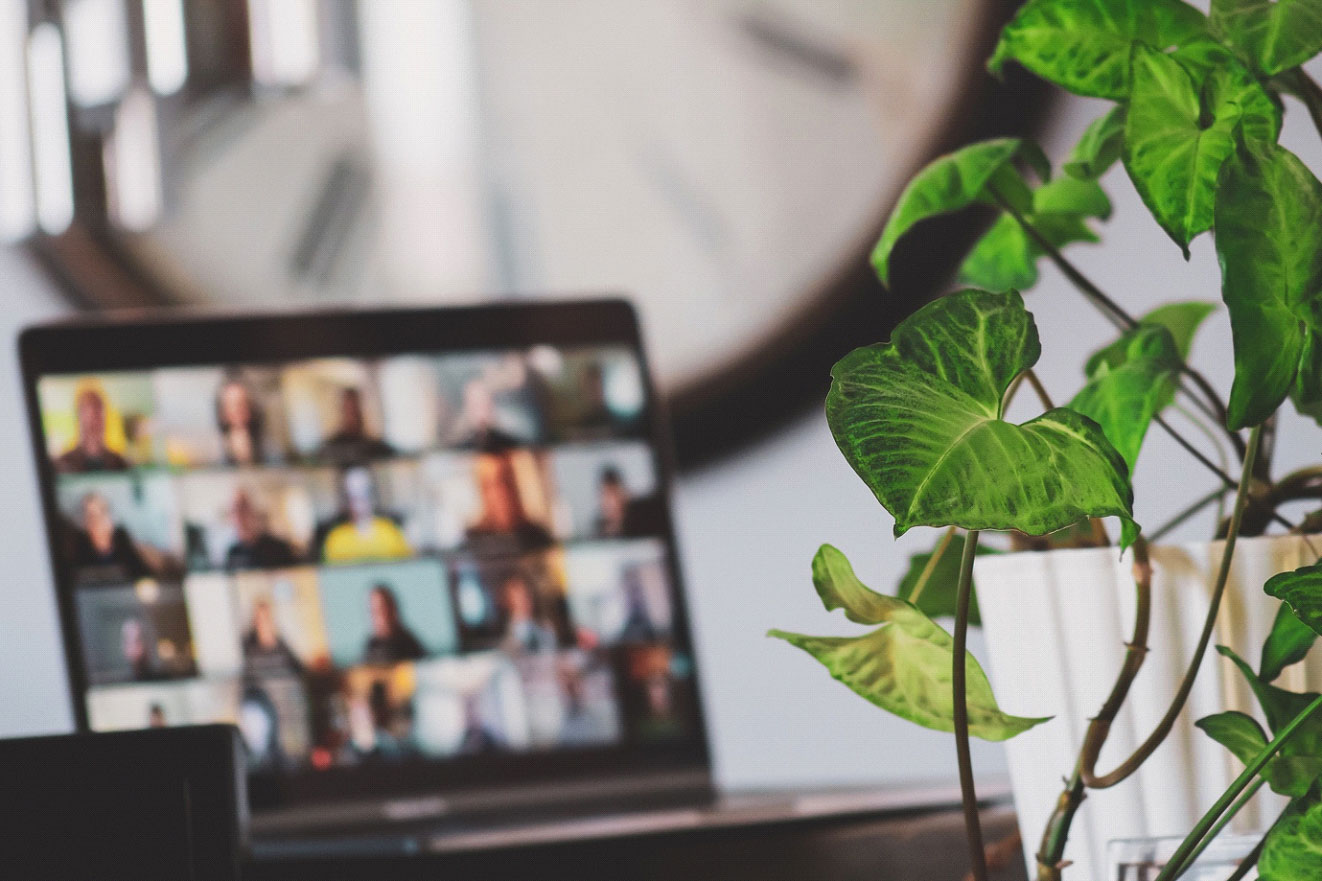 Figure 9: Photo by Sigmund on Unsplash.
Figure 9: Photo by Sigmund on Unsplash.
10 Screen-Free Ways to Work, Learn and Enjoy Life
“Shut Down” Time.
Shut down screens at least a few hours before going to bed (preferably minimum 2 hours before going to bed). This will help your body to produce melatonin and prepare your body for sleep. The opportunity here is that it could be a great moment to spend interacting in “real” with your family and tell some anecdotes of the day, fool around with the kids or play a family game, read a book and so on.
Break up continuous blocks of screen time.
For example: stretching, looking at something at a distant for minimum 20 seconds, maintaining good posture, and avoid eating in front of the screen. Not eating in front of your screen will help avoid habit formation and ensure you’ll get away from your screen for a little while. You can set some timeslots through the use of an alarm or an hourglass (it could even brighten up your desk space and be a topic for social interaction as some people might comment on it, or just ask what it is doing there) etc. More than 2 hours of consecutive screen time is not recommendable.
Talk with others.
Ever felt annoyed or found it ridiculous to send emails knowing someone is next door or only a few meters away? I remember a time where we would send emails back and forth, until I basically got annoyed by it, got out of my chair and walked over to my colleague and talked face to face which resolved the issue at hand in less than a minute. My point you may ask. Well, he was only 2 doors away, on the same floor. It gets even worse if you work in an open space and you can observe their body language giving away, they’re sending “that reply”, as if the button comes alive. Before sending emails or instant messages, consider using the phone or get out of that chair and meet them. Often it is much quicker and simpler which may strengthen relationships. Especially when it comes down to learning or understanding an idea, discussing with other people can deepen understanding and lead to even new ideas and ways of thinking. Talking also prevents misinterpretation and misunderstanding by the receiver of the message that the sender wants to bring across. It happens too often. And it gets worse or at least is more susceptible when you might have to communicate in a foreign language.
“Old School” Reading.
It may sound strange, but when it comes down to reading something where I’d like to put all my concentration into, I still go first for printed formats like for example books, magazines or newspapers. Not only does it avoid the bright screen to strain your eyes and avoid interruptions of notifications popping up, and thus messing with your brain continuously, but sometimes these different forms with bigger texts are not only easier to read but can also be easier to explore and annotate. It can also be a pleasant sensory change to turn physical paper pages compared to scrolling the wheel on a mouse or using a track pad.
Listen Up
Nowadays there are a variety of other media available that give you access to information. For example, music, podcast and audiobooks can create a welcome variation. These types of information open up a new way of where and when you can use them. You can listen while driving, cooking, walking, jogging, and so on. Your eyes will benefit from taking a rest and you’ll be able to be active or just get out of that chair. If you like to combine it with an activity, ensure that you’re choosing an audio resource that doesn’t require your full concentration.
“Gain The Upper Hand”
Why not try something practical, something that uses your tactile sense? It is a great way to explore and learn. A hands-on approach can be part of your job, learning in the form of a practical task or process. Try to put your design on paper, draw the anatomy and connections between the different parts of that particular circuit, explain someone the concept of your idea by drawing it out or using inventive ways. It is also a good way to move around the office space and interact with others and use other skills. Nowadays with COVID-19 raging around and being more or less confined to our home setting, I emerged myself a bit into music and for example took a course on sound engineering and started building my own power cables, speaker cables, and upgraded my speakers’ cabinets and even the crossovers. It was a great way to read, yes books, learn something new and use my hands to construct things I never had done before. It is always interesting to understand how things actually work, beyond just buying a HiFi system and listening to it. On top of it, the gratification taken out of building something yourself is a great way to satisfy your reward system.
Try to learn a new practical skill after work or after studying. We are designed to move, but also to use our hands. Gain the upper hand of your screen and use your hands for something else than typing or moving the cursor around.
Rubik’s Cube
Ever tried a Rubik cube? It was invented by Ernö Rubik in 1974, who once said; “A good puzzle, it’s a fair thing. Nobody is lying. It’s very clear, and the problem depends just on you.” I remember playing hours and hours with it trying to solve it and even together with one of my brothers, challenging and helping each other. There even exist championships and world records have been set since then. During the 80s it was a bit of hype and we would bring our cubes to school to enjoy them during the breaks. During this time, we would also see different variations and designs popping up. Who remembers the Rubik 360, Rubik’s Snake, Rubik’s Magic or the Rubik’s pyramid amongst others? Now, a brief diversion from whatever you’re concentrating on like for example a puzzle or other physical game can be a great way to give your brain a wakeup call and rest your eyes. When learning something, you could create some Q&A or flash cards. Or try to solve a different Rubik’s cube, why not.
Reflect and Plan
When you need to think about your work or reflect on your learning, taking some time away from your screen is essential. Find a place to sit, go for a stroll, ride your bike or do whatever helps you think clearly and creatively. Periods of reflection are necessary to embed information in your memory as well. It has been shown for example that you can be concentrated for only about 25-30 minutes and after that it will start to drop off rapidly. This means that whatever you do beyond this time will not be as easily retained and you’ll be far less effective. If you’re learning, after 25 minutes, stand up and walk away from your desk and screen and get some water or talk briefly to someone in the kitchen for example. You may even recapitulate what you’ve been studying in your own words which will help highlight what you have and don’t have retained about what you just studied. Similar with work, you may want a brief 2-minute break to clear up your mind and be more effective after it.
Sometimes it is useful to reflect on a larger scale project or think a little longer about a plan, especially when it is future oriented like for example your five-year strategy plan for the company. These types of mental exercises need more than a 5-minute thought or even 5 hours. It is also a great idea step away from your screen and get to a totally different surrounding to think it all over.
Write the Quality of our Mind
Writing can be a great way to collect notes, explore ideas, record notes to reflect on afterwards, help schedule and plan. You can use a journal to work on your professional and personal growth journey. Another aspect is that you can experiment with different types of paper, books and writing tools. For some people, writing helps them with learning or preparing for a presentation for example. A great way to be away from the screen again. Ever used or asked for a paper napkin in a bar to explain something? I've actually sat at a TGIFridays on a Thursday afternoon and charted out the start up and operation of a business on the back of a TGIFriday bar napkin. I've actually charted out the start up of a major software project on the back of a series of brown grocery bags taped to a wall. There is much to be said for writing the quality of your mind.
D.O.D.
I’ve kept this one for last. No, I don’t mean Department of Defense, director of development, date of death, drop on demand, depth of discharge, digital online development, dear old dad, digital on demand, or any other of the 66 definitions this acronym can be used for. What I mean is, a “Digital Off Day”. Ever seen someone check their Instagram, Facebook, WhatsApp, Snapchat, … during dinner? Checking their emails or messages during meetings, when you’re presenting or just when you’re talking to them? I find it kind of disrespectful. Nothing is worse than someone interrupting a communication because of their digital toy disrupting the interaction. It doesn’t matter who you are or who you’re talking to, unless your wife is due any moment, there is no reason at all to interrupt an ongoing interaction. It says a lot about the respect one has for another. Try to resist the urge to react as soon as something rings, flashes, pops-up. I know it is not easy, but it is respectful. Also try a digital off day and give your brain the opportunity to create better memory, increase creativity and improve your sleep quality. Except for family calls or friends, don’t fire up your digital devices. Try it! Yes, it may be hard at first, but it will give you a sense of relief once you start doing it. For example, have two mobile phones, so you can leave your work phone home during the weekend, or in a separate place where you won’t access it. I enjoy diving a lot for example, and apart from experiencing a great time in another environment, it is also the fact that you’re unreachable: no phone calls, no email pings, no notifications, none of the digital interferences of everyday life. Just me, the water and the sound of the bubbles exiting the respirator. My phone, I only look at it to see if there is a message or missed call from my family. All other, I disregard. Of course, you can’t do that during the workweek, but try to do a DOD in the weekend, while you’re on holidays. You can even start doing that during some specific hours of the day after work for example. Other times to implement this for example: family time, school time, meals, or while spending time with someone in person. It also sets a great example for your children of uninterrupted family time and balance in your life. In the end some DOD or away from the screen time will increase your efficiency, creativity, effectiveness, and mental and physical health. One thing to take into account is that you may let some people know that you’re taking some DOD, so they don’t get worried or think you’re ignoring them. In a conversation with one of my co-authors, he started laughing and said: “you know what, point well taken! Why do I say that? If I don’t respond within about 30 minutes, people are afraid I’ve died.” Ever had that feeling something happened to someone because they didn’t reply immediately or timely? I know I have. And for sure our parents have. Think of our moms who get concerned because you didn’t reply to that text message straight away – because you’re working. I bet you she probably looked a gazillion times at her screen before you texted or called her back or she might have tried calling you within the hour. Worse, if she can see that you “read” the message or text, but didn’t reply immediately – because you might be in a meeting or so… Sometimes, we are “too connected” for our own good.
Conclusions
Contemporary evidence suggests rapid increase in digital screen time, facilitated by the COVID-19 pandemic. Mentally active types of screen time, such as playing video games, studying or working on a computer, might not affect risks in a similar way as more passive forms of screen time do and thus the relationship between screen time and health, especially the mental component needs a certain degree of nuance. One fact is for sure, physical activity and breaking up extended periods of sitting cannot be overemphasized. Active lifestyles improved dietary practices, and healthier behaviors will promote individual health and wellbeing.
Assessing dose-response relationships between screen time and health related issues in different COVID-affected populations, leveraging digital technologies can give use further insights in the behavioral dimensions and psychological correlates as well as the adverse impact on physical health. These investigations may facilitate informed development of practice guidelines. From a strategic point of view, it could help direct on how existing guidelines should be revisited and lead to the development of future guidelines and recommendations. This way healthcare providers and decisionmakers can use this information and novel guidelines to empower specific populations to adopt healthier lifestyles and behaviors.
Start to implement some of the above proposed screen-free actions and balance the way you implement digital on-screen time.
It is truly worth making an effort to discover balanced screen use practices.
It’s to your benefit, make it count!Conflicts of interest: None.
Acknowledgment: None.
Funding: No funding was received at any stage of conceptualizing or preparing this manuscript.
References:
Being young in Europe today – digital world. https://ec.europa.eu/eurostat/statistics-explained/index.php/Being_young_in_Europe_today_-_digital_world .
Beydoun, M. A., H. A. Beydoun and Y. Wang (2008). "Obesity and central obesity as risk factors for incident dementia and its subtypes: a systematic review and meta-analysis." Obes Rev 9(3): 204-218.
Blehm, C., S. Vishnu, A. Khattak, S. Mitra and R. W. Yee (2005). "Computer vision syndrome: a review." Surv Ophthalmol 50(3): 253-262.
Carroll, N., Sadowski, A., Laila, A., Hruska, V., Nixon, M., Ma, D. W. L., & Haines, J., 2020. The Impact of COVID-19 on Health Behavior, Stress, Financial and Food Security among Middle to High Income Canadian Families with Young Children. Nutrients, 12(8), 2352.
Christensen, J.F., 2017. Pleasure junkies all around! Why it matters and why 'the arts' might be the answer: a biopsychological perspective. Proc. Biol. Sci. 17 (284), 1854.
Christakis, D.A., Zimmerman, F.J., 2007. Violent television viewing during preschool is associated with antisocial behavior during school age. Pediatrics. 120 (5), 993–999.
de Ridder C.A., Morton J.D. 2020. When will DNA solve the data storage crisis? https://www.pillsburylaw.com/en/news-and-insights/dna-data-storage.html. September 22.
Duan, L., & Zhu, G., 2020. Psychological interventions for people affected by the COVID-19 epidemic. The Lancet Psychiatry. April 1. Elsevier Ltd.
Digital economy and society statistics – households and individuals. https://ec.europa.eu/eurostat/statistics-explained/index.php/Digital_economy_and_society_statistics_-_households_and_individualsFrench, A.N., Ashby, R.S., Morgan, I.G., Rose, K.A., 2013. Time outdoors and the prevention of myopia. Exp. Eye Res. 114, 58–68.
Górnicka, M., Drywień, M.E., Zielinska, M.A., & Hamułka, J., 2020. Dietary and Lifestyle Changes During COVID-19 and the Subsequent Lockdowns among Polish Adults: A Cross-Sectional Online Survey PLifeCOVID-19 Study. Nutrients, 12(8), 2324.
Gowrisankaran, S. and J. E. Sheedy (2015). "Computer vision syndrome: A review." Work 52(2): 303-314.
Guerrero, M. D., J. D. Barnes, J. P. Chaput and M. S. Tremblay (2019). "Screen time and problem behaviors in children: exploring the mediating role of sleep duration." Int J Behav Nutr Phys Act 16(1): 105.
Guh, D. P., W. Zhang, N. Bansback, Z. Amarsi, C. L. Birmingham and A. H. Anis (2009). "The incidence of co-morbidities related to obesity and overweight: a systematic review and meta-analysis." BMC Public Health 9: 88.
Halgamuge, M.N., 2013. Pineal melatonin level disruption in humans due to electro- magnetic fields and ICNIRP limits. Radiat. Prot. Dosim. 154 (4), 405–416.
Hu, Z., Lin, X., Chiwanda Kaminga, A., & Xu, H., 2020. The impact of coronavirus disease (COVID-19) epidemic on lifestyle behaviors and their association with subjective wellbeing among the general population in the Mainland China: a cross-sectional study (Preprint). Journal of Medical Internet Research, 22(8).
Hunter, R. F., J. M. Murray and H. G. Coleman (2020). "The association between recreational screen time and cancer risk: findings from the UK Biobank, a large prospective cohort study." Int J Behav Nutr Phys Act 17(1): 97.
Hussaindeen, J. R., A. Gopalakrishnan, V. Sivaraman and M. Swaminathan (2020). "Managing the myopia epidemic and digital eye strain post COVID-19 pandemic - What eye care practitioners need to know and implement?" Indian J Ophthalmol 68(8): 1710-1712.
Kandola, A., Owen, N., Dunstan, D., Hallgren, M., 2021. Prospective relationships of adolescent’s screen-based sedentary behaviour with depressive symptoms: The Millenium Cohort Study. Psychological Medicine. 1-9.
Li, C., G. Cheng, T. Sha, W. Cheng and Y. Yan (2020). "The Relationships between Screen Use and Health Indicators among Infants, Toddlers, and Preschoolers: A Meta-Analysis and
Systematic Review." Int J Environ Res Public Health 17(19).
Lissak, G., 2018. Adverse physiological and psychological effects of screen time on children and adolescents: Literature review and case study. Environmental Research. 164, 149-157.
Maras, D., Flament, M.F., Murray, M., Buchholz, A., Henderson, K.A., Obeid, N., Goldfield, G.S., 2015. Screen time is associated with depression and anxiety in Canadian youth. Prev. Med. 73, 133–138.
Marker, C., Gnambs, T., & Appel, M., 2019. Exploring the myth of the chubby gamer: A meta-analysis on sedentary video gaming and body mass. Social Science and Medicine, (May), 112325.
Mena Roa, M., 2021. El desigual acceso a Internet en el Mundo. https://es.statista.com/grafico/24230/tasa-de-penetracion-de-internet-por-region-del-mundo/?utm_source=Statista+Global&utm_campaign=0ad563d995-All_InfographTicker_daily_ES_AM_KW08_2021_MO&utm_medium=email&utm_term=0_afecd219f5-0ad563d995-308766633 February, 19.
Mena Roa, M., 2021. ¿Cuántas horas al día pasamos conectados a internet? https://es.statista.com/grafico/22701/tiempo-medio-de-uso-diario-de-internet/ January 28.
Mena Roa, M., 2021. 2020, el año de las videollamadas. https://es.statista.com/grafico/24208/personas-que-han-realizado-llamadas-o-videollamadas-a-traves-de-internet/ February 17.
Moore, R.J. 2011. Eric Schmidt’s “5 Exabytes” quote is a load of crap. https://blog.rjmetrics.com/2011/02/07/eric-schmidts-5-exabytes-quote-is-a-load-of-crap/ . February 7.
Nadis S. 2021. A new light on DNA storage. https://harvardmagazine.com/2021/03/right-now-dna-storage. March- April.
O’Dea, S., 2020. Smartphone users worldwide 2016-2021. https://www.statista.com/statistics/330695/number-of-smartphone-users-worldwide/.
Oshima, N., Mishida, A., Shimodera, S., Todhigi, M., Ando, S., Yamaski, S., 2012. The suicidal feelings, self-injury, and mobile phone use after lights out in adolescents. J. Pediatr. Psychol. 37 (9), 1023–1030.
Pfefferbaum, B., Nitiéma, P., & Newman, E., 2019. Is Viewing Mass Trauma Television Coverage Associated With Trauma Reactions in Adults and Youth? A Meta-Analytic Review. Journal of Traumatic Stress, 32(2), 175–185.
Pišot, S., Milovanović, I., Šimunič, B., Gentile, A., Bosnar K., Prot, F., … Drid, P., 2020. Maintaining everyday life praxis in the time of COVID-19 pandemic measures (ELP-COVID-19 survey). European Journal Of Public Health.
Rafique, N., L. I. Al-Asoom, A. A. Alsunni, F. N. Saudagar, L. Almulhim and G. Alkaltham (2020). "Effects of Mobile Use on Subjective Sleep Quality." Nat Sci Sleep 12: 357-364.
Rechichi, C., De Mojà, G., Aragona, P., 2017. Video game vision syndrome: a new clinical picture in children? J. Pediatr. Ophthalmol. Strabismus 29, 1–10.
Robertson, L.A., McAnally, H.M., Hancox, R.J., 2013. Childhood and adolescent television viewing and antisocial behavior in early adulthood. Pediatrics. 131 (3), 439–446.
Sarbadhikari, S., & Sarbadhikari, S., 2020. The global experience of digital health interventions in COVID-19 management. Indian Journal of Public Health, 64(6), 117.
Sultana, A., Tasnim, S., Bhattacharya, S., Hossain, M., & Purohit, N., 2020. Digital screen time during COVID-19 pandemic: A public health concern. SocArXiv. September 1.
Tang, S., A. Werner-Seidler, M. Torok, A. J. Mackinnon and H. Christensen (2021). "The relationship between screen time and mental health in young people: A systematic review of longitudinal studies." Clin Psychol Rev 86: 102021.
Wahl, S., M. Engelhardt, P. Schaupp, C. Lappe and I. V. Ivanov (2019). "The inner clock-Blue light sets the human rhythm." J Biophotonics 12(12): e201900102.
Weinstein, A., A. Livny and A. Weizman (2017). "New developments in brain research of internet and gaming disorder." Neurosci Biobehav Rev 75: 314-330.
Weiss, M.D., Baer, S., Allan, B.A., Saran, K., Schibuk, H., 2011. The screens culture: im- pact on ADHD. Atten. Defic. Hyperact Disord. 3, 327–334.
Willoughby, T., Adachi, P.J.C., Good, M., 2012. A Longitudinal study of the association between violent video game play and aggression among adolescents. Dev. Psychol. 48 (4), 1044–1057.
Wood, H.C., Scott, H., 2016. Sleepyteens: social media use in adolescence is associated with poor sleep quality, anxiety, depression and low self-esteem. J. Adolesc. 51, 41–49.
Wu, L., S. Sun, Y. He and B. Jiang (2016). "The effect of interventions targeting screen time reduction: A systematic review and meta-analysis." Medicine (Baltimore) 95(27): e4029.
Yirka B. 2021. Using electricity to increase the amount of data that can be stored by DNA. https://phys.org/news/2021-01-electricity-amount-dna.html. January 12.
Personal profiles:
Tim Vancamp, BSc, MBA has over two decades experience in the med tech space.
Especially with regards to neuromodulation and understanding the brain and nervous system Prof. De Ridder has been a mentor and instrumental in sparking his curiosity for further insight.He loves to dig into emerging health-tech and has a relentless commitment to improve the lives of others, especially with regards to neuromodulatory treatments for different neurological disorders.
He is highly intrigued with neuroeconomics and likes to question the current assumptions about how great leaders, companies and organisations inspire, motivate and lead people, to start changing and building that better world we all would like to live in, and create for our next generations.He has (co-)authored several peer-reviewed scientific articles, co-written several book chapters, presented numerous posters at national and international congresses and is the author of “Diving Into Leadership: Motivating Others”.

Dirk De Ridder, MD, PhD, is professor of Neurosurgery at the Dunedin School of Medicine, University of Otago in New Zealand.
His research is based on the Bayesian brain concept, i.e. considering the brain as a predictive machine that updates its predictions by active exploration of the environment through the senses. He always incorporates an evolutionary approach in his work.
His main research interest is the understanding and treatment of phantom perceptions (sound, pain), especially by use of functional imaging navigated non-invasive (TMS, tDCS, tACS, tRNS, LORETA neurofeedback) and invasive (implants) neuromodulation techniques.
He is intrigued by an understanding of commonalities in different diseases such as in thalamocortical dysrhythmias (pain, tinnitus, Parkinson disease, depression, slow wave epilepsy) and Reward deficiency syndromes (addiction, OCD, Personality disorders, …)
A third pillar of his research relates to the neurobiological underpinnings of the ‘self” and ‘other’ in the brain, as it relates to social interactions, philosophy and religion.
He has developed “burst” and “noise” stimulation as novel stimulation designs for implants, and is currently working on multifocal or network stimulation, as well as reconditioning stimulation.

Alan Guinn has served as a growth force in business for the better part of over 40 years. His professional growth and leadership within multinational corporations led to the formation of his Consultancy, The Guinn Consultancy Group, Inc. in 2003.
Author or co-author of 13 books and multiple articles, he currently serves as a partner in several companies, including AD&G Development Group, LLC; Bast Holdings, LLC; and Avenir Investment Group, LLC, in the USA; and ABSVLTD; Rushmore University, Ltd., and Blue Moose Holdings, Ltd, on the Island of Antigua.
His current focus areas include Marketing, Development, Finance, the Application of Blockchain, and alternative paths within Higher Education. Contact him directly at aguinn@theguinnconsultancygroup.com.
